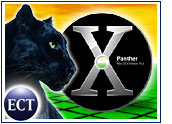Every technology-aware being — plus the U.S. courts — agrees that Microsoft dominates the software business.
In the consumer and business office suite markets, Sun Microsystems’ free, online Star Office distribution doesn’t seem to have made a dent, despite its sophistication and interoperability with Microsoft’s Office package. Aside from Star Office, there’s so little competition out there that it’s safe to assume that you’ve never heard of them.
In the operating system arena, despite Apple’s recent resurgence and the fact that the Windows ME “upgrade” is merely an incremental, expensive and questionable improvement on Windows 98, there doesn’t seem to be any rush on the part of consumers — except for the computer cognoscenti — to adopt alternative operating systems, such as Linux.
Not to mention the fact that with its Internet Explorer browser, Microsoft has all but creamed the competition in that arena as well.
So, will Microsoft continue to be the seemingly impregnable software company it has been for the past decade?
Gulliver Versus the Lilliputians?
Probably not, because in one area, at least — e-commerce — the software giant is beginning to look like Gulliver up against the Lilliputians.
A number of consulting firms, including Jupiter Research, Boston Consulting Group and Harris Interactive, have released studies projecting that as consumers become more comfortable with using credit cards and other privacy-related information online, shopping on the Internet will continue to grow at a rapid pace over the next decade. Indeed, some reports speak of exponential growth over just the next five years.
All this activity is going to require servers — lots and lots of them — and the servers are all going to need software. The market for e-commerce-related server software is really going to be where the money is over the next few years.
Whose Software?
There’s money to be made on the initial sale, of course. But unlike Windows, Microsoft Office and even consumer-oriented browser software, e-commerce server software is still a New Thing, with lots of important — and potentially profitable — upgrades to come.
Much of this new market for software has been preempted by none other than Linux. Initially, Linux was thought to be a guerrilla alternative for consumer and small-business desktops. That market was limited from the outset, however, by Linux’ perceived complexity in the eyes of the average computer user and by the relatively puny solo marketing power of Linux distributors, such as Red Hat and Caldera.
Now, however, with the support of hardware powerhouse IBM, Linux has exploded into the e-commerce market. Hot on the heels of its Small Business Suite for Linux, IBM has just released its WebSphere Commerce Suite Start, a high-transaction e-commerce platform.
Together, IBM expects the two software packages to cover most of the e-commerce market, from relatively small businesses to major business-to-business sites. In February, we can expect to see another Linux-based e-commerce package called ActiveMarket, from e-commerce software vendor Exterprise, Inc.
Advantage and Disadvantage
Where is Microsoft in all of this? Hardly sinking, but hardly the king of the high seas, as it has been in other areas.
Microsoft’s biggest advantage, aside from its marketing power, is the fact that its e-commerce software is built around Windows 2000, with which most large corporations’ IT people are very familiar and for which a critical mass of ancillary applications have been created.
But its dependence on Windows 2000 might also be Microsoft’s biggest disadvantage, going forward. Like all the company’s other software, Windows 2000 is a closed system whose development nuances are inaccessible to outside software engineers. In contrast, of course, Linux is an open system, meaning that improvements can be made more easily, more cheaply, and on the user’s schedule — no waiting for Microsoft’s next expensive “upgrade.”
Maybe that’s why when a convenience store chain in Japan went shopping for e-commerce software for its 15,000 servers, they chose an IBM Linux-based system. An augury of things to come, Microsoft?
What do you think? Let’s talk about it.



































Social Media
See all Social Media